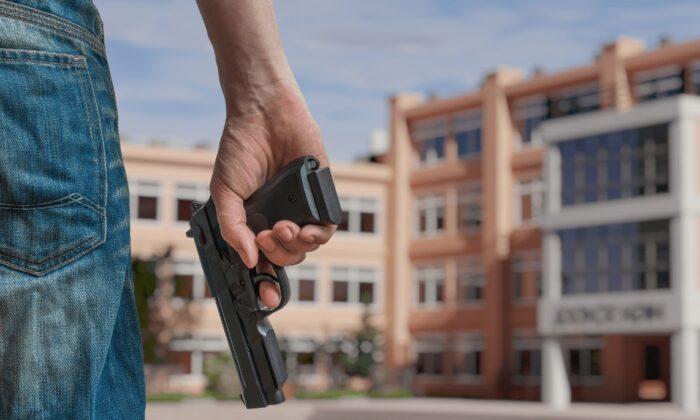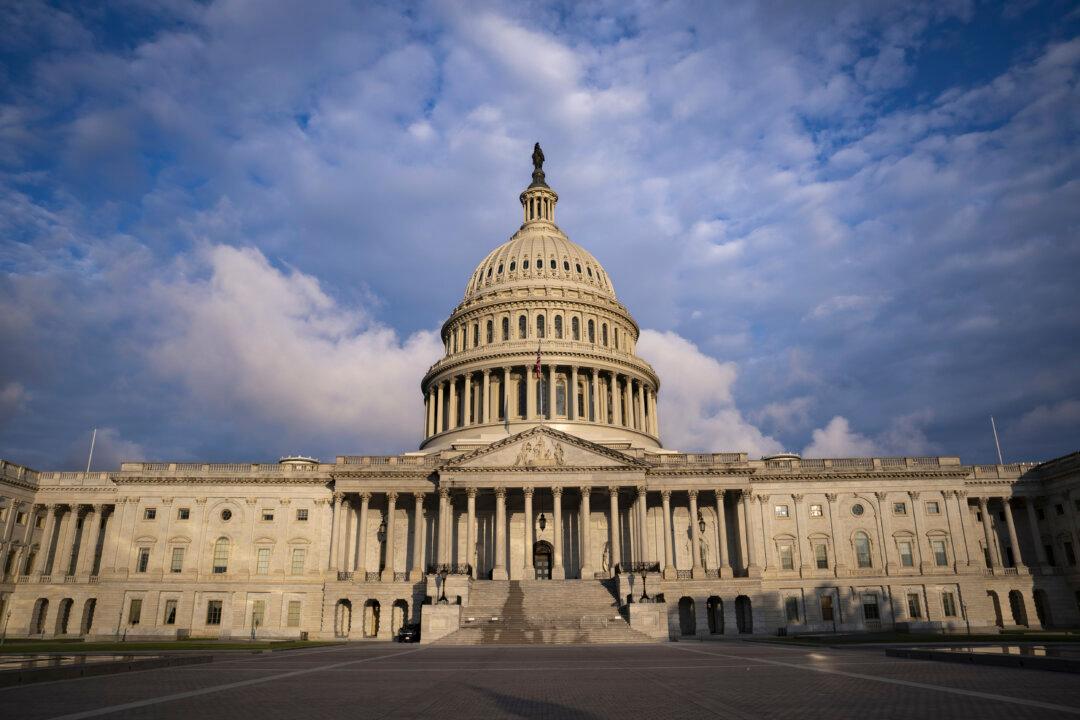Shatter-Resistant Entryways
As documented in the academic journal Victims & Offenders, an “immediate and economical” way to protect students “is to tighten” access to school buildings. Many school administrators have done this simply by locking doors. However, there are roughly 460 million firearms in the United States, and the bulk of them will quickly shatter the glass entrances that are a common feature of schools, allowing killers to enter in a few seconds.Note that the treatment doesn’t make glass bulletproof or impenetrable. Instead, it makes the glass shatter-resistant. This slows down intruders and affords precious time for students to flee or help to arrive.
Nor does every piece of glass in a school need to be treated. Just installing the film on exterior entryways can substantially improve safety, and selecting other strategic locations can help as well.
Security film is relatively inexpensive and quickly installed. From large public schools to small private ones, the cost of this potential lifesaver is typically less than 1 percent of a school’s annual budget. Once applied, it lasts for the lifetime of the glass.
For example, it took one day and cost $5,000 in materials and labor to treat a church with more than 20 glass entryway panes on the front, side, and back of the building. Similarly, public school administrators who were hesitant to install security film due to cost concerns found they were able to apply it in a lot more locations than they originally anticipated because it was so affordable.
“Brad Garrett—a retired FBI agent and an ABC News contributor, who has done security audits on schools—said fortifying entrance doors with material like bulletproof glass, is cost prohibitive for most schools, especially a small Christian school like Covenant. He said metal doors are a cheaper option, but they make schools feel dark and ‘prison-like.’”
Thus, it appears that a massive media outlet and a former FBI agent who specializes in school security are unfamiliar with an option that addresses those concerns.Don’t Make Celebrities of Mass Murderers
The 1999 Columbine High School massacre was the first mass shooting that received wall-to-wall media coverage, and ever since then, the press has made the perpetrators of such slaughters into household names. During this same era, fatal school shootings have occurred every year in the United States.“because of the frequency of mass killers citing previous perpetrators as role models or sources of inspiration, it is critical that media outlets give careful consideration to how they cover such incidents. It seems likely that the more the media focuses on the perpetrators rather than the victims, the more people who are at risk of violence will be influenced to commit their own attacks, whether due to imitation, inspiration, idolizing, perceived similarities, sympathy with the cause, or their desire for fame.”
Compulsory Mental Health Treatment
While the vast majority of people with mental illness are not violent, the perpetrators of mass shootings are far more likely to suffer from serious psychiatric disorders than the general population. This is especially true of people who commit indiscriminate mass shootings in which an attacker wantonly kills people in a public setting like a school, park, or church.• “The magnitude of deinstitutionalization of the severely mentally ill qualifies it as one of the largest social experiments in American history.” • About “763,391 severely mentally ill people (over three-quarters of a million) are living in the community today who would have been hospitalized 40 years ago.”
Similar circumstances surrounded the mental health of the mass murderer in Parkland and the perpetrators of other such massacres.
Arming Selected Teachers
Despite knee-jerk reactions to arming teachers, this action can significantly and discretely improve the safety of students for a fraction of the cost of employing officers or security guards. This is because teachers and other school employees:
• who are willing and able to protect students can be quickly trained to be as safe and proficient with a firearm as police. • are ubiquitous in schools and can provide ample coverage of buildings and campuses, something that has been severely lacking in school massacres. • would covertly carry, giving them an advantage of surprise over would-be attackers. • can be seriously trained, appropriately armed, and generously paid for about 1 percent of what is already spent on schools.
Large crowds—like those found in schools, concerts, and sporting events—are prime targets for mass murderers. That’s why the Superdome in New Orleans—which has a seating capacity of 73,208 people—has more than “900 public safety personnel” on duty in the stadium and surrounding area during “large events such as football games.”
That amounts to one security personnel for every 80 people, including “armed public safety officers, non-armed game day security guards along with officers from the Louisiana State Police, New Orleans Police Department and Orleans Parish Sheriff’s Department.”
In comparison, Marjory Stoneman Douglas High School—which had about 3,200 students at the time it was attacked—had only one armed guard on duty. This is about 1/40th of the security per person at the Superdome.
Columbine had about 1,900 students and one armed guard, or 1/24th of the Dome’s.
During the Virginia Tech slaughter, the campus had 26,370 students and “131 major buildings spread over 2,600 acres,” while “only 14” officers were on duty, including “5 on patrol and 9 in the office.” In other words, each patrol officer was responsible for protecting about 5,000 students, 25 buildings, and 500 acres.
Such security is grossly inadequate because killers can easily find a soft spot without guards. This need not be the case. Given that the average pupil/teacher ratio in public schools is about 16 to 1, arming one out of five teachers would equal the Dome’s ratio of 80 to 1.
Moreover, teachers would carry the weapons covertly, making it nearly impossible for assailants to determine who is armed and who is not. This can provide an element of surprise crucial to saving lives.
Contrary to claims spread by CNN and NBC, teachers can rival the firearm skills of police officers. This is because even recreational shooters fire as accurately as police, and most officers only receive a modest amount of firearm training.
In 2015, the International Journal of Police Science & Management published a study on the risks of “deadly police shootouts.” This involved testing “the level of shooting accuracy demonstrated by law enforcement recruits upon completion” of “their firearms training in comparison with novice” recruits who had not yet received this training. The study found:
• “no difference” in accuracy at any distance between recruits who had completed law enforcement or military handgun training and those who only had “recreational” handgun experience. • trained officers were “only 10 percent more accurate” than recruits with “minimal/no experience” at ranges of 3 to 15 feet, which is where a “majority of gunfights and critical situations will likely” occur.
On average, police receive 71 hours of firearms instruction in their initial academy training and less than 15 hours per year thereafter. They also get very little real-world experience with firing guns. A 2017 Pew poll found that “only about a quarter (27 percent) of all officers say they have ever fired their service weapon” in the line of duty.
These facts point to the conclusion that selected and well-trained teachers would be very effective in protecting the lives of students. Even the general public saves far more lives with guns than are lost in accidents. U.S. civilians use guns to stop potentially lethal violence more than 100,000 times per year, while there are less than 600 fatal firearm accidents per year.
Despite claims that arming teachers would be too costly, it would amount to a drop in the bucket of current school spending. Even under a high-cost scenario where teachers receive five times more gun training than police and are well paid for their training time, the annual cost of equipping, training, and supervising one out of five teachers would be about 1 percent of government spending on schools.
Summary
Assumptions, politics, and sentiments aside, people can quickly and inexpensively reduce the risk of school shooting deaths by:
• hardening the glass entryways to schools by treating them with films that prevent the doors from shattering if shot. • limiting the amount of fame bestowed on the perpetrators of mass murders. • implementing policies to ensure that people with serious psychiatric disorders get the help they need, even if they are unwilling to be treated. • arming and training selected teachers who are willing and able to protect students.
From Just Facts Daily






